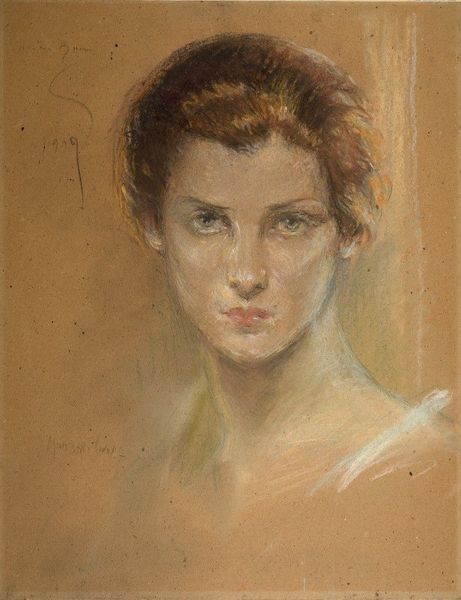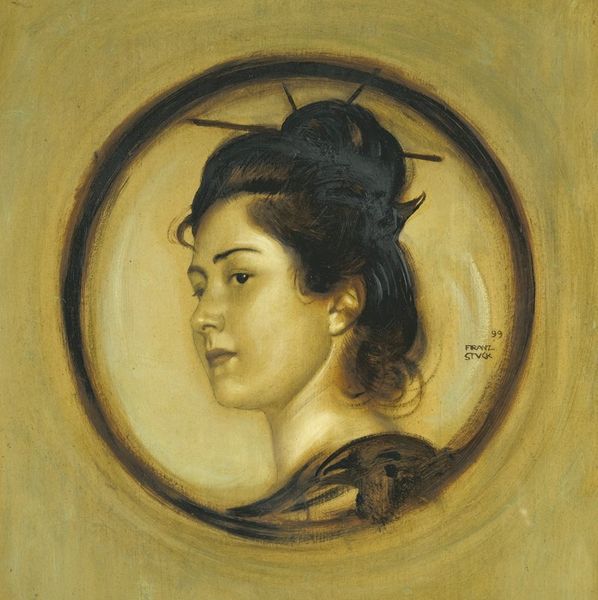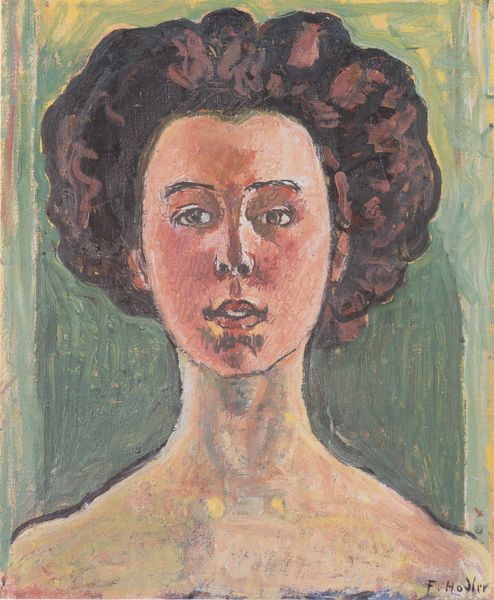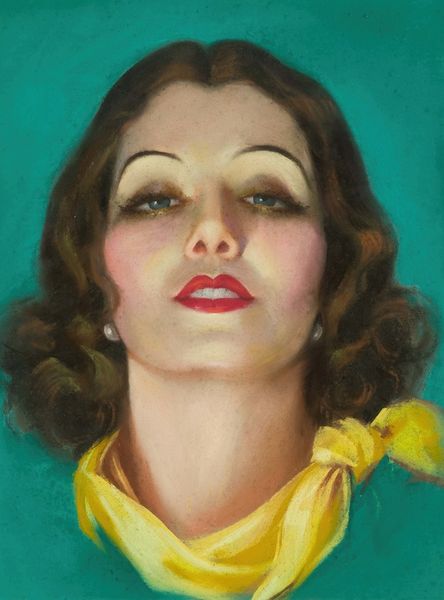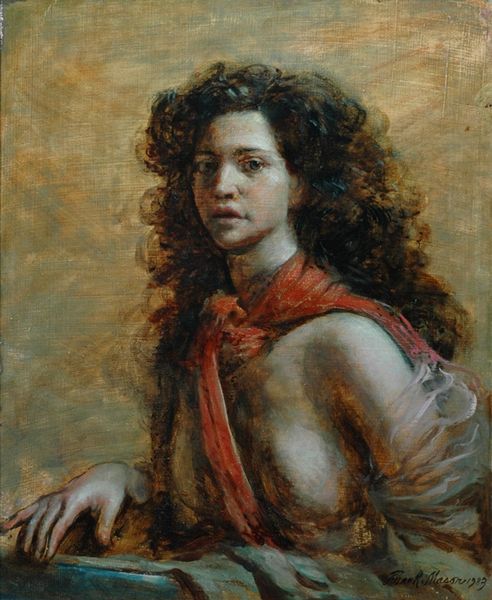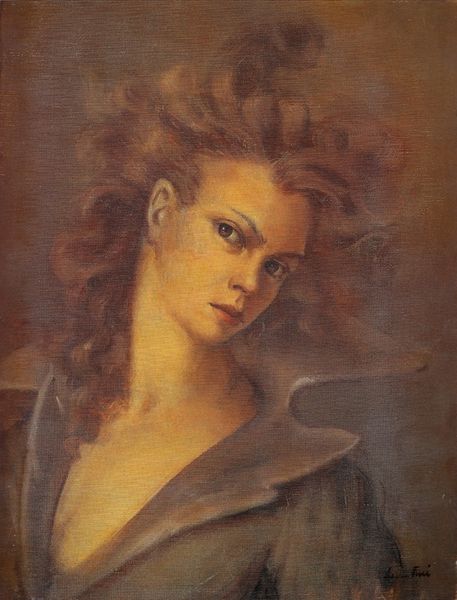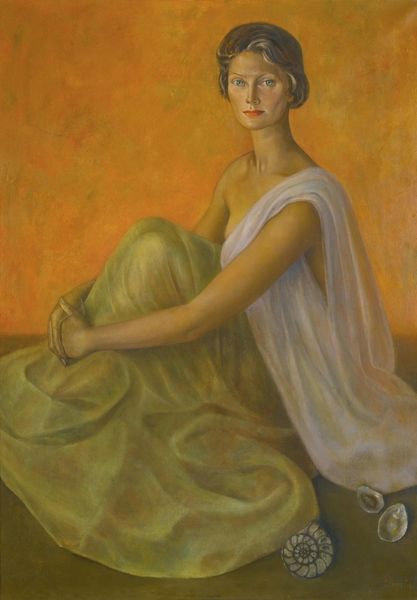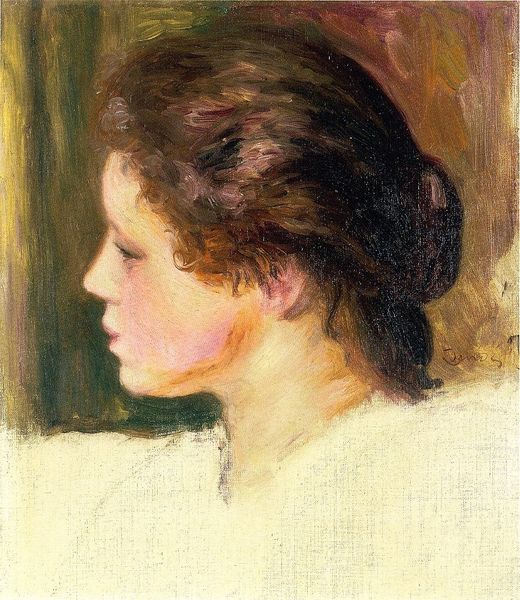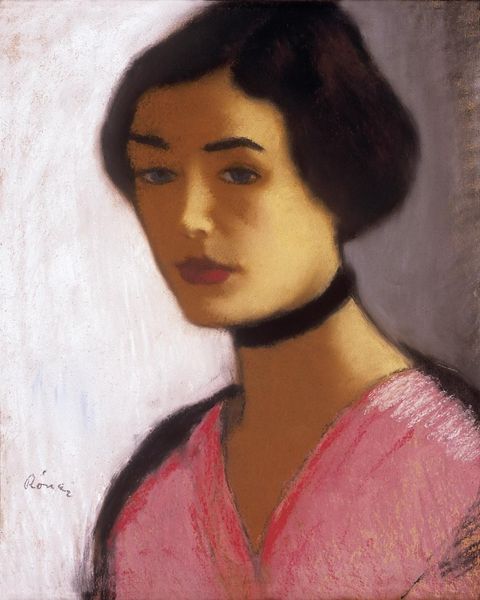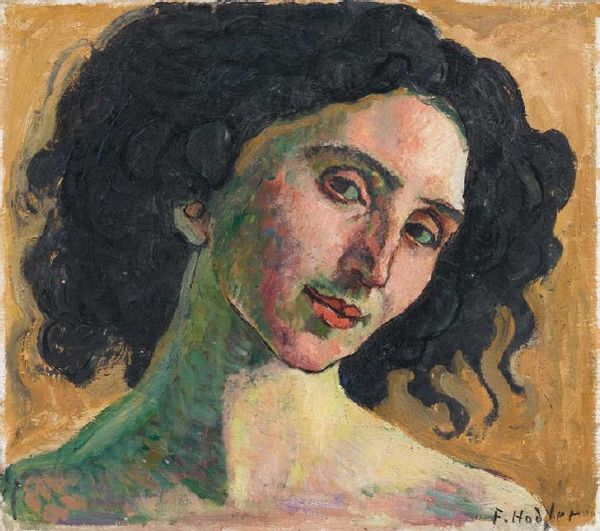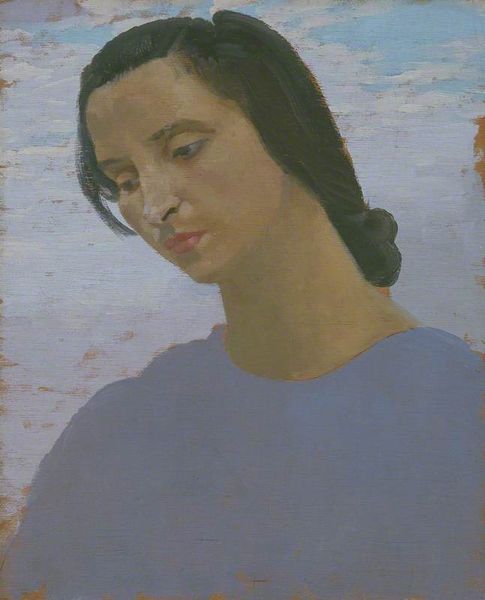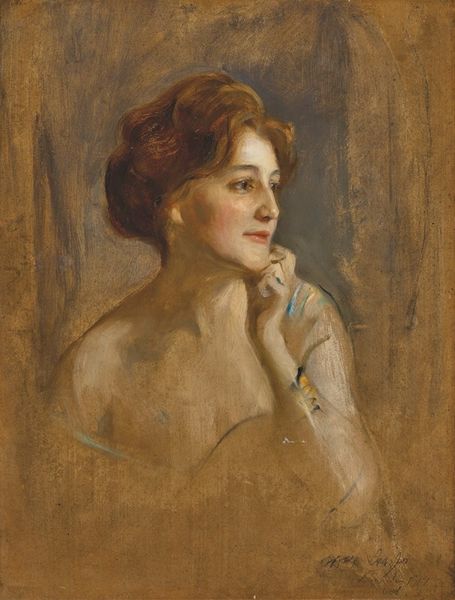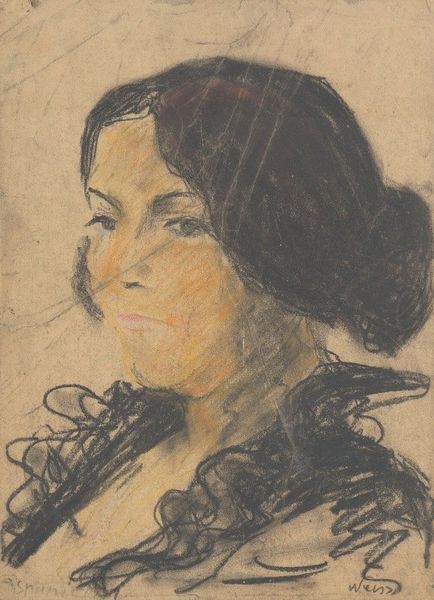
painting, oil-paint
#
portrait
#
figurative
#
painting
#
oil-paint
#
figuration
#
surrealism
#
realism
Copyright: Modern Artists: Artvee
Editor: This is Léonor Fini’s "Portrait féminin no. 19," painted between 1940 and 1946. I'm struck by how classical it feels, yet there’s something unsettling about her gaze. How do you interpret the visual symbolism at play here? Curator: The gaze is key. It avoids direct engagement, yet feels knowing, reflective. Fini positions the woman as subject, not object. The upward tilt hints at disdain, doesn't it? And have you considered how the restrained palette of earth tones against the pale green background enhances this sense of detachment? Editor: I hadn't thought about the background contributing to the feeling, but it really does. The soft green almost feels like a mask, contrasting with the very alive expression of the woman. Does this speak to a particular moment in history, maybe related to the war? Curator: The portrait was created during and shortly after World War II. The controlled emotional presentation could reflect the era's need for composure. The carefully coiffed hair and arched eyebrows suggest an adherence to a societal ideal. How do you think Fini uses these recognizable symbols to create a narrative about female identity during a tumultuous period? Editor: So, it's not just a portrait, but maybe a statement about the expectations placed on women, the pressure to maintain appearances? Curator: Precisely! And consider the enduring power of such images, even today. They act as a reminder of societal constraints and a celebration of individual resilience against them. Editor: That’s fascinating! I’ll never look at a portrait the same way again. Curator: Indeed! By understanding the cultural memory embedded within these images, we gain deeper insight into our past and present.
Comments
No comments
Be the first to comment and join the conversation on the ultimate creative platform.
